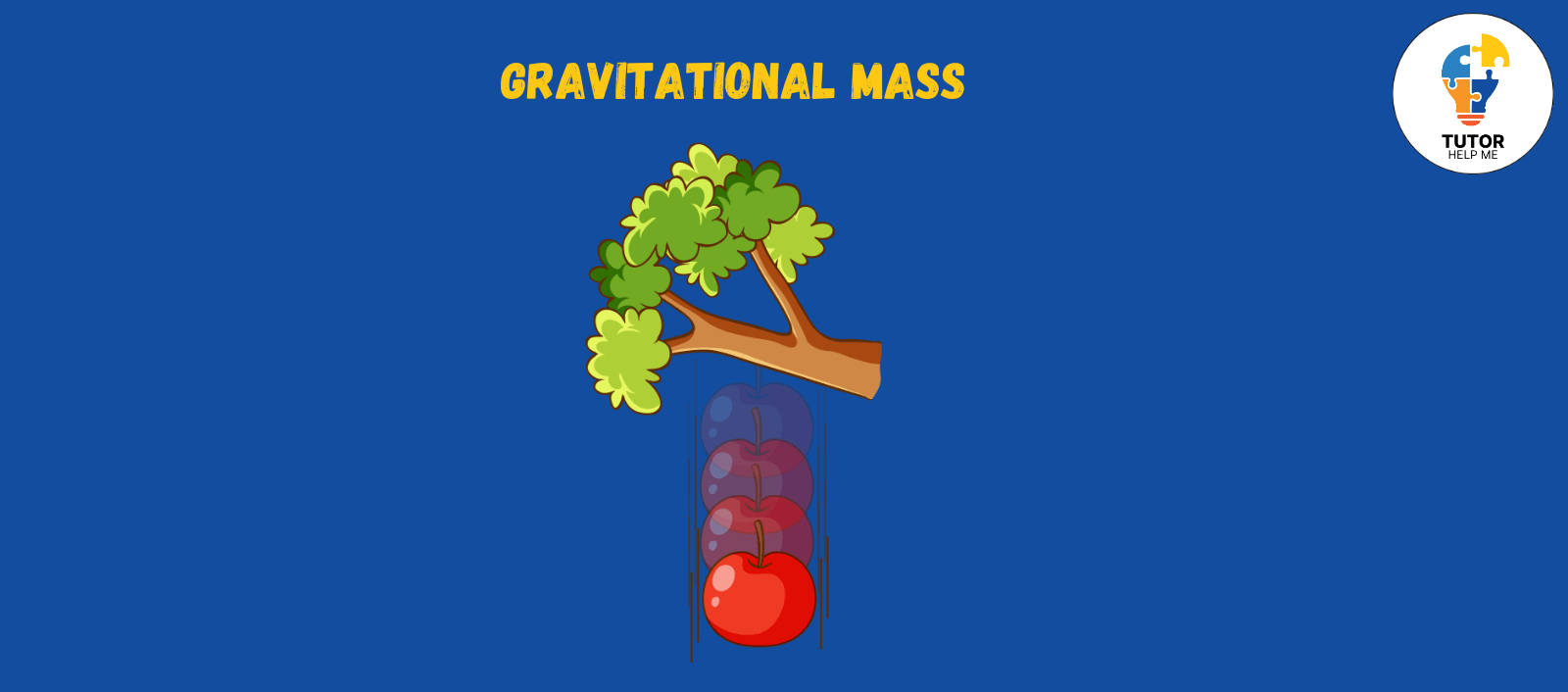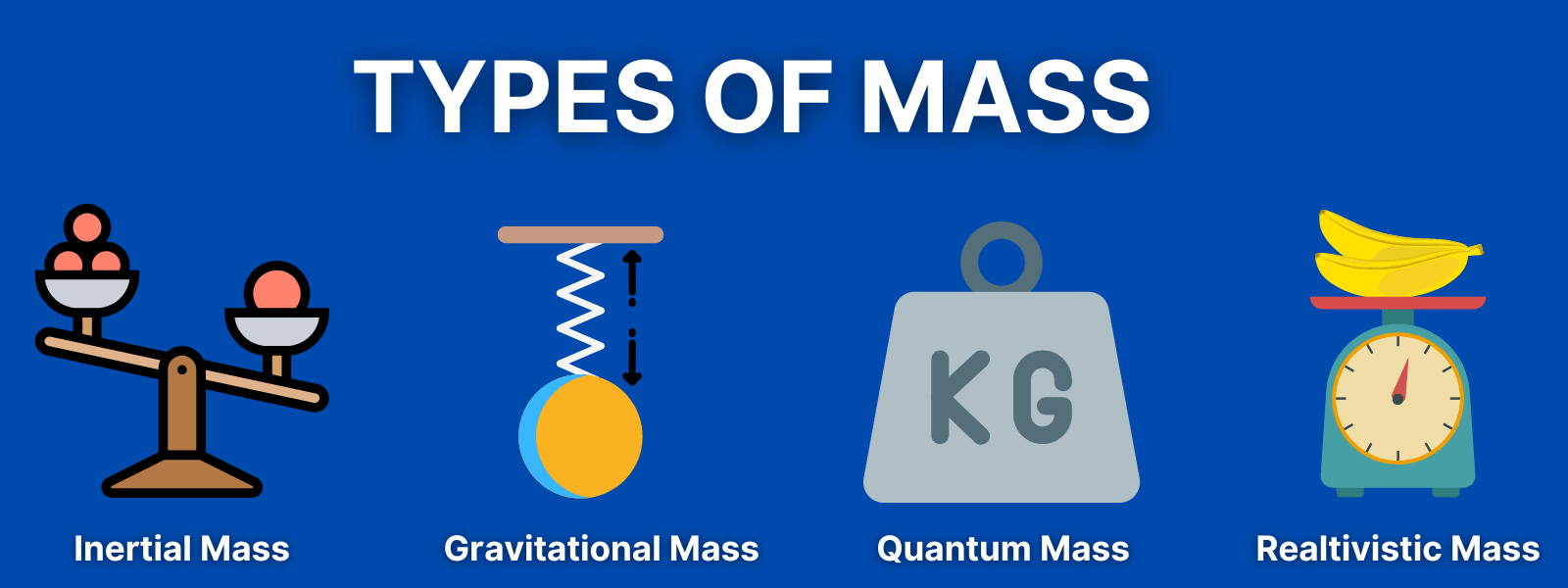Mass is a fundamental concept in physics, but it comes in different forms. Each type helps us understand how objects behave under different forces. In this blog, we’ll explore the main types of mass, including inertial, gravitational, and relativistic mass.
These categories highlight how mass interacts with forces, motion, and speed. Let’s dive into each one to see why they matter in understanding the universe. If you are unsure about what mass is, check out our guide: What is Mass?
Types of mass in physics
These are different types of mass in physics :
- Inertial Mass
- Gravitational Mass
- Realtivistic Mass
- Quantum Mass
Read Our Guide What is a mass in physics?
Inertial Mass
“Inertial mass measures an object’s resistance to acceleration. It reflects how much force is needed to change an object’s velocity.”
SI Unit,
The SI unit for inertial mass is the kilogram (kg).
Formula,
The formula for calculating inertial mass is m = F/a, where F is force, and a is acceleration.
Example,
Two balls of different sizes sit on separate springs. The red ball is larger and heavier, while the blue ball is smaller and lighter. When force is applied:
- The blue ball compresses the spring more easily and moves faster.
- The red ball resists the motion because it has more inertial mass.
This means the red ball needs more force to move at the same rate as the blue . This shows how inertial mass measures an object’s resistance to a change in motion.

Gravitational Mass
“Gravitational mass measures how strongly an object interacts with a gravitational field. It determines the gravitational force an object experiences and exerts.“
SI Unit,
The unit for gravitational mass is the kilogram (kg).
Formula,
Gravitational mass can be calculated using Newton’s law of gravitation:
F = G⋅m1⋅m2 / r2
Here, F is the gravitational force, G is the gravitational constant (6.67× 10−11 𝑁⋅𝑚2/𝑘𝑔
Example,
An apple falls from a tree toward the ground. This shows the pull of gravity acting on the apple.
- The apple moves down because Earth pulls it with a force.
- This pull depends on the apple’s gravitational mass.
Gravitational mass is what makes objects feel heavy and fall when dropped. The stronger the gravitational mass, the stronger the pull from gravity.

Invariant mass
“Invariant mass is a physical quantity that remains constant regardless of the object’s motion or reference frame. It represents the total energy and momentum of a system in the rest frame.”
SI Unit,
The unit for Invariant mass is the Kilogram (kg).
Formula,
m2 c4 = E2 − (pc)2
- m: Invariant mass
- E: Total energy of the system
- p: Momentum of the system
- c: Speed of light in a vacuum
Example,
Imagine you have a 5 kg iron weight.
- On Earth, it has a mass of 5 kg.
- On the Moon, it still has a mass of 5 kg.
- Even if you carry it on a spaceship, it remains 5 kg.
This is because mass does not change with location or gravity. This unchanging mass is called invariant mass.

Realtivistic Mass
“Relativistic mass is the mass of an object in motion relative to an observer. It increases as the object’s speed approaches the speed of light, affecting its momentum and energy.“
SI Unit,
The unit for relativistic mass is the kilogram (kg).
Formula,
Relativistic mass (mrel) is calculated by:
mrel = m0 / √1-(v2/c2)
Here, m0 is the rest mass, v is the object’s velocity, and c is the speed of light. This formula shows how mass increases with speed.
Example,
If the cart and bricks start moving at a speed close to the speed of light, the person pushing it would notice something strange:
- This is because its relativistic mass increases with speed.
- The faster the cart moves, the heavier it feels.

Quantum Mass
“Quantum mass refers to the mass of particles as described in quantum mechanics. It relates to a particle’s behaviour in fields like the Higgs field, which gives particles their mass.“
SI Unit,
The unit for quantum mass is the kilogram (kg).
Formula,
Quantum mass is often derived from equations in quantum field theory, such as the Higgs mechanism or Dirac equation. For elementary particles, mass can be calculated using interactions within the Higgs field, but there is no straightforward formula due to the complex quantum calculations involved.
Example,
The image shows an atom. In quantum physics, tiny particles like electrons get their mass by interacting with something called the Higgs field.
So, the electron inside the atom has mass because of this invisible field.
No Higgs field = No mass for electrons

Dirac Equation
The Dirac Equation is a fundamental equation in quantum mechanics that describes the behaviour of particles like electrons. Formulated by physicist Paul Dirac in 1928, it combines quantum mechanics and special relativity, allowing for a complete understanding of particles with spin-½, such as fermions.
The Dirac Equation is expressed as:
( iℏγμ∂μ − mc )ψ=0
- Here, i is the imaginary unit, ℏ is the reduced Planck’s constant, γμ are Dirac matrices, ∂μ represents partial derivatives, m is the particle’s mass, c is the speed of light, and ψ is the wave function.
This equation predicts particle properties, like magnetic moments, and even anticipated the existence of antimatter. The Dirac Equation remains essential in understanding particle physics and the structure of matter.
Higgs Mechanism
The Higgs Mechanism is a process in particle physics that explains how particles acquire mass. It is a key part of the Standard Model of particle physics, particularly in the context of the Higgs field and the Higgs boson.
According to the Higgs Mechanism, the universe is filled with a field known as the Higgs field. Particles gain mass by interacting with this field. The more strongly a particle interacts with the Higgs field, the more massive it becomes.
- The Higgs boson, discovered in 2012, is a particle associated with the Higgs field.
- The mechanism also explains why some fundamental particles, like the photon, remain massless because they do not interact with the Higgs field.
In simple terms, the Higgs Mechanism provides a way for particles to “pick up” mass through their interaction with the Higgs field. Without this mechanism, particles would remain massless, and the universe would behave very differently.
Why Choose Tutorhelpme Physics Tutors
| Reason | Details |
|---|---|
| Expert Tutors | Highly qualified physics tutors with deep understanding of physics. |
| Personalized Learning | Tailored lessons to suit individual student needs and learning styles. |
| Flexible Scheduling | Learn at your own pace with lessons that fit your schedule. |
| Interactive Teaching | Complex concepts made easier through engaging, interactive methods. |
| Confidence Building | Focus on building student confidence and mastering key concepts. |
| Affordable Rates | Competitive prices with no compromise on the quality of teaching. |
| Exam Preparation | Help with GCSEs, A-Levels, and other exams to ensure academic success. |
Read More Difference Between Molar mass and Molecular mass Difference Between Inertial Mass and Gravitational Mass
What does inertial mass measure?
It measures an object’s resistance to acceleration, reflecting the force needed to change its velocity.
Why is relativistic mass important?
It shows how an object’s mass increases with speed, affecting energy and momentum as it approaches light speed.
Why Is the Higgs Boson Important in Physics?
The Higgs boson, discovered in 2012 at CERN, explains how particles gain mass. This discovery confirmed the Higgs Mechanism, which is fundamental to understanding the structure of matter.
How Do Scientists Measure Mass in Space?
Astronauts onboard the International Space Station (ISS) experience microgravity, so traditional weighing methods don’t work. Instead, they measure mass using oscillation techniques, where an object’s motion is analysed to determine its inertial mass.

